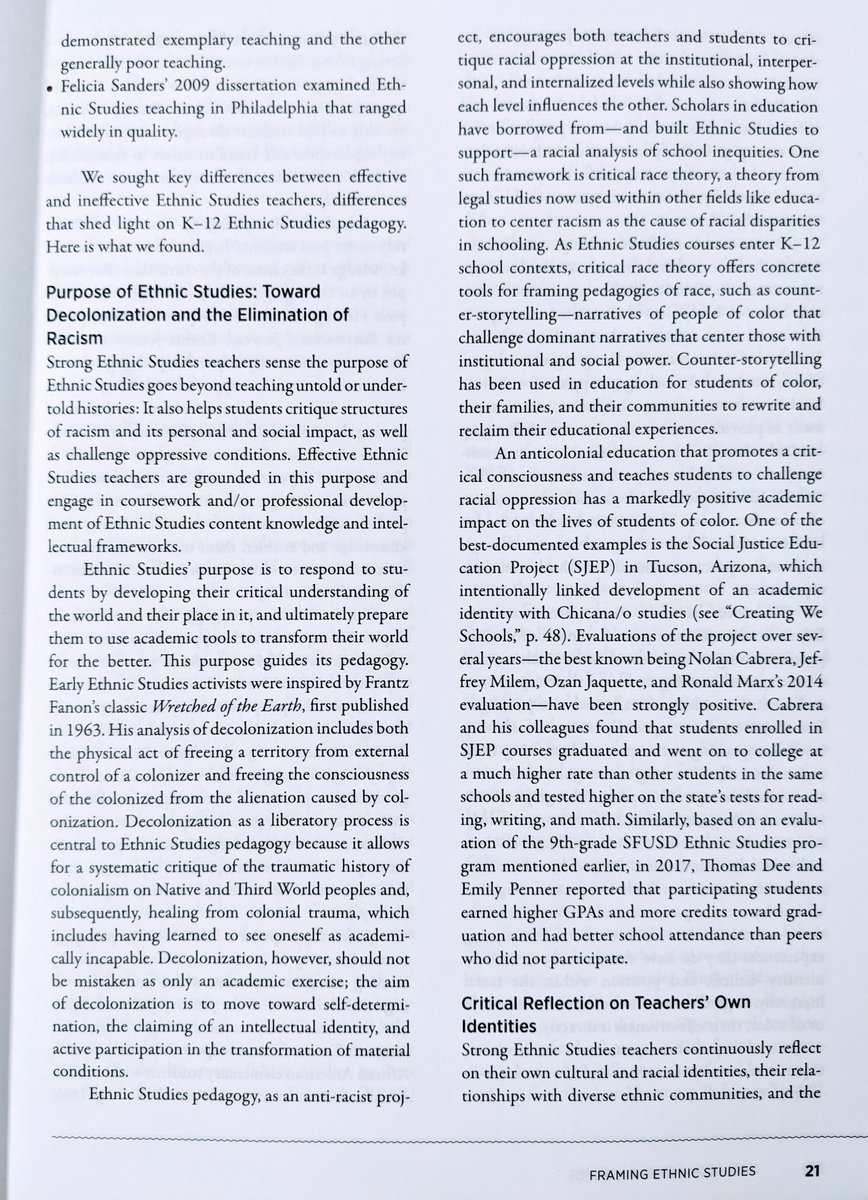
CRT: Questioning or Destroying?
1/ CRT scholars Richard Delgado & Jean Stefancic say Critical Race Theory “questions the very foundations of the liberal order, including equality theory, legal reasoning, Enlightenment rationalism,
1/ CRT scholars Richard Delgado & Jean Stefancic say Critical Race Theory “questions the very foundations of the liberal order, including equality theory, legal reasoning, Enlightenment rationalism,
2/ and neutral principles of constitutional law" (‘Intro to Crit Race Theory,’ 2001).
It’s good to question things, right?
Sure it is. But what does that look like in practice? Two examples:
[1] Cheryl Harris’ foundational (1993) essay, “Whiteness as Property,” in which
It’s good to question things, right?
Sure it is. But what does that look like in practice? Two examples:
[1] Cheryl Harris’ foundational (1993) essay, “Whiteness as Property,” in which
3/ she considered how a legal expansion of affirmative action, inspired by the redistributive policies of the African National Congress (ANC) in post-apartheid South Africa, could be a model for the US:
harvardlawreview.org/wp-content/upl…
harvardlawreview.org/wp-content/upl…
4/ [2] Judge Bernice Bouie Donald’s dissent in Antonio Vitolo, et al v. Isabella Guzman, where she argues: (1) The SBA funding gap between minority-owned and non-minority-owned businesses is attributable to racism, and (2) the US government is responsible for past and present
5/ racist policies and practices that created this and virtually every other racial gap:
opn.ca6.uscourts.gov/opinions.pdf/2…
When CRT questions the “liberal order,” this is no grad-school intellectual exercise—it’s a strategy for transforming our entire legal system into one that
opn.ca6.uscourts.gov/opinions.pdf/2…
When CRT questions the “liberal order,” this is no grad-school intellectual exercise—it’s a strategy for transforming our entire legal system into one that
6/ privileges group rights over individual rights.
A gauntlet of case law currently stands in the way of CRT activists creating race-based policy & quotas to close all racial gaps (in homeownership, health outcomes, income, education, etc..— gaps liberalism addresses with
A gauntlet of case law currently stands in the way of CRT activists creating race-based policy & quotas to close all racial gaps (in homeownership, health outcomes, income, education, etc..— gaps liberalism addresses with
7/ narrowly-tailored affirmative action & broadly aimed social welfare policy). Read the CRT legal studies lit.—they all know the boss battle is with individual rights (the core of liberalism, and of the 14th Amendment).
Here’s what Delgado’s fictional interlocutor says in
Here’s what Delgado’s fictional interlocutor says in
8/ “Rodrigo's Seventh Chronicle: Race, Democracy, and the State” (1993):
“Liberal democracy and racial subordination go hand in hand, like the sun, moon, and stars. Enlightenment is to racism as sexuality is to women's oppression—
“Liberal democracy and racial subordination go hand in hand, like the sun, moon, and stars. Enlightenment is to racism as sexuality is to women's oppression—
• • •
Missing some Tweet in this thread? You can try to
force a refresh







